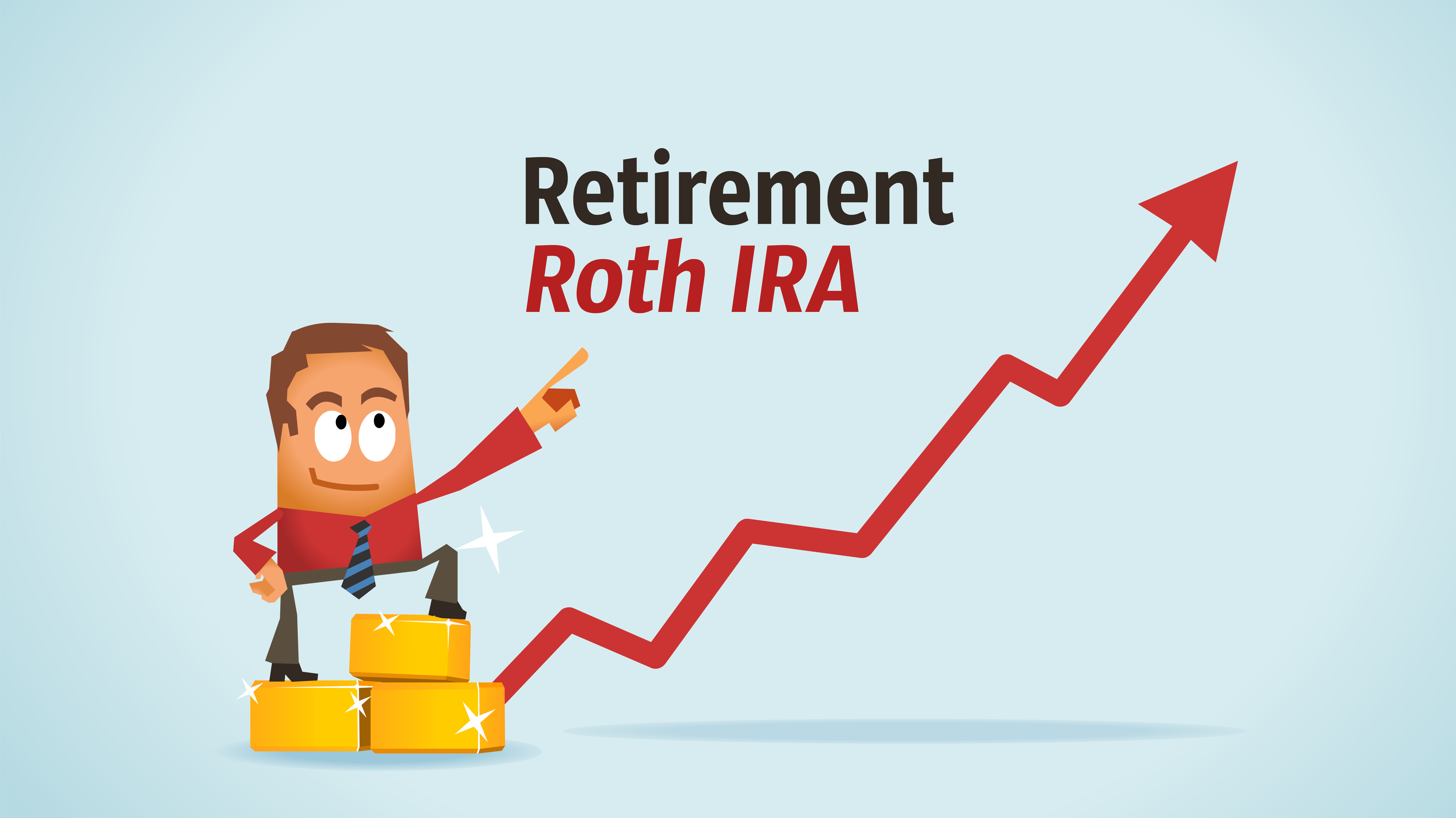When it comes to retirement, early planning is crucial. The power of compounding interest and market performance yields the best results over a long period of time.
Many young people think retirement is far in their future and procrastinate planning for retirement until it's too late. This can be a critical mistake as there are tax advantages that could be reduced or missed based on the time that you start investing, as is the case for the Roth IRA which we will discuss in this article.
Having been around since 1997, the Roth IRA is a relatively new type of retirement account compared to traditional IRAs. Roth IRAs are tax-advantaged accounts that allow you to invest your after-tax income now and withdraw the money tax-free after retirement. There are a number of caveats with this type of retirement account and that's why it's important to take advantage of it as soon as possible. One big advantage of a Roth IRA is that you can withdraw your contributions penalty-free.
Pros
- Money grows tax-free
- Can withdraw contributions penalty-free at any time
Cons
- Income limitations
- Low maximum contribution amounts
Retire a Millionaire
Starting your investment journey early is key to maximizing your payout later in life.
Historically, the stock market has had an average 10-12% (without inflation) return per year over the last 100 years [1] [2]. If you start contributing from the age of 25 and you contribute the maximum allowed amount as of 2020 ($6,000), you could have over $1 million by the time you retire and all of that money will be free of tax when you take out a distribution (withdraw money).
For demonstration purposes, let's be very conservative and assume the market will return an average of 7% per year and that you will start investing when you are 25 years old and will continue to do for 40 years (until you are 65). If you contribute $6,000 per year for 40 years (41 contributions if you include the last year), you will contribute $246,000.00 and that would have yielded a total value of $1,287,657.42 That is over $1 million dollars that could be withdrawn without paying any taxes at retirement.

| Age | Contributions | Future Value |
|---|---|---|
| 25 | $6,000.00 | $6,000.00 |
| 26 | $12,000.00 | $12,420.00 |
| 27 | $18,000.00 | $19,289.40 |
| 28 | $24,000.00 | $26,639.66 |
| 29 | $30,000.00 | $34,504.43 |
| 30 | $36,000.00 | $42,919.74 |
| 31 | $42,000.00 | $51,924.13 |
| 32 | $48,000.00 | $61,558.82 |
| 33 | $54,000.00 | $71,867.93 |
| 34 | $60,000.00 | $82,898.69 |
| 35 | $66,000.00 | $94,701.60 |
| 36 | $72,000.00 | $107,330.71 |
| 37 | $78,000.00 | $120,843.86 |
| 38 | $84,000.00 | $135,302.93 |
| 39 | $90,000.00 | $150,774.13 |
| 40 | $96,000.00 | $167,328.32 |
| 41 | $102,000.00 | $185,041.30 |
| 42 | $108,000.00 | $203,994.20 |
| 43 | $114,000.00 | $224,273.79 |
| 44 | $120,000.00 | $245,972.95 |
| 45 | $126,000.00 | $269,191.06 |
| 46 | $132,000.00 | $294,034.43 |
| 47 | $138,000.00 | $320,616.85 |
| 48 | $144,000.00 | $349,060.02 |
| 49 | $150,000.00 | $379,494.23 |
| 50 | $156,000.00 | $412,058.82 |
| 51 | $162,000.00 | $446,902.94 |
| 52 | $168,000.00 | $484,186.15 |
| 53 | $174,000.00 | $524,079.18 |
| 54 | $180,000.00 | $566,764.72 |
| 55 | $186,000.00 | $612,438.25 |
| 56 | $192,000.00 | $661,308.93 |
| 57 | $198,000.00 | $713,600.55 |
| 58 | $204,000.00 | $769,552.59 |
| 59 | $210,000.00 | $829,421.27 |
| 60 | $216,000.00 | $893,480.76 |
| 61 | $222,000.00 | $962,024.41 |
| 62 | $228,000.00 | $1,035,366.12 |
| 63 | $234,000.00 | $1,113,841.75 |
| 64 | $240,000.00 | $1,197,810.67 |
| 65 | $246,000.00 | $1,287,657.42 |
As you can see, contributing early is the best approach in maximizing your return because we want to contribute when our tax bracket is lower so we pay less taxes now and no taxes after retirement. My recommendation is that if you can afford it, contribute as soon as you are eligible. If you are working a part-time job while in high school or college and can afford it, then contribute what you can. You'll thank yourself later!
Income and Contribution Limits
Like all things in life, there are limits to how much money you can contribute to your Roth IRA and it's not necessarily based on whether you can afford it or not. Believe it or not, if you make too much money you are not allowed to contribute at all.
First things first, the maximum allowed yearly contributions to the Roth IRA are capped. For 2019 and 2020 the maximum contribution amount is $6,000 unless you are over 50 and you can contribute up to $7,000. This amount could be reduced based on your income.
The Roth IRA has an earned income limitation meaning you cannot contribute more than you earned. For example, if you worked part-time for a year and only made $4,000 then you cannot contribute more than $4,000.
On the other hand, if you made too much money, then your allowed contribution amount could be limited or even reduced down to $0. If you are single and your income* is more than $122,000 or if you're married and your combined household income* is more than $192,000 then your allowed contribution starts reducing. If your income* is above $137,000 for single and $203,000 for married couples, then you are not eligible to contribute at all.
Final Thoughts
Retirement planning is important and needs to happen early on to take full advantage of tax benefits and the power of compound interest. The Roth IRA is a very powerful tax-advantaged retirement account that should be used in conjunction with other retirement accounts to maximize the current and future tax benefits. As you grow in your career and earn more money, you may be restricted on how much money you can contribute to your Roth, thus the importance of starting early.
The market can be volatile and unpredictable over short periods and having a balanced and diversified portfolio helps when there is a market downturn. Investing for retirement is done over a long period and the farther you are from retirement, the more risk you can take with your investments; as you get closer to retirement, the more risk-averse you become and your investment strategy should change to fit that need.
Stay tuned for more retirement and investment pieces coming soon!
* - Modified Adjusted Gross Income (MAGI)

